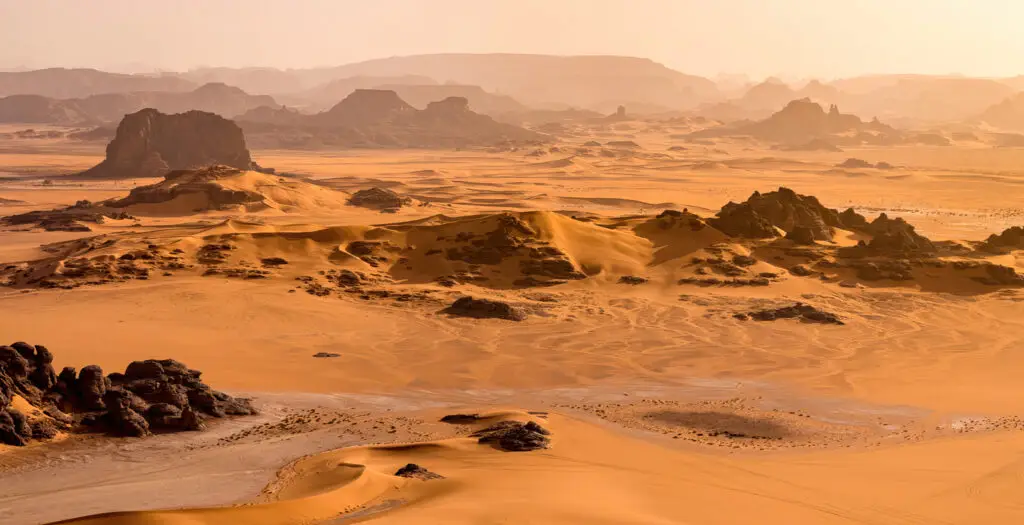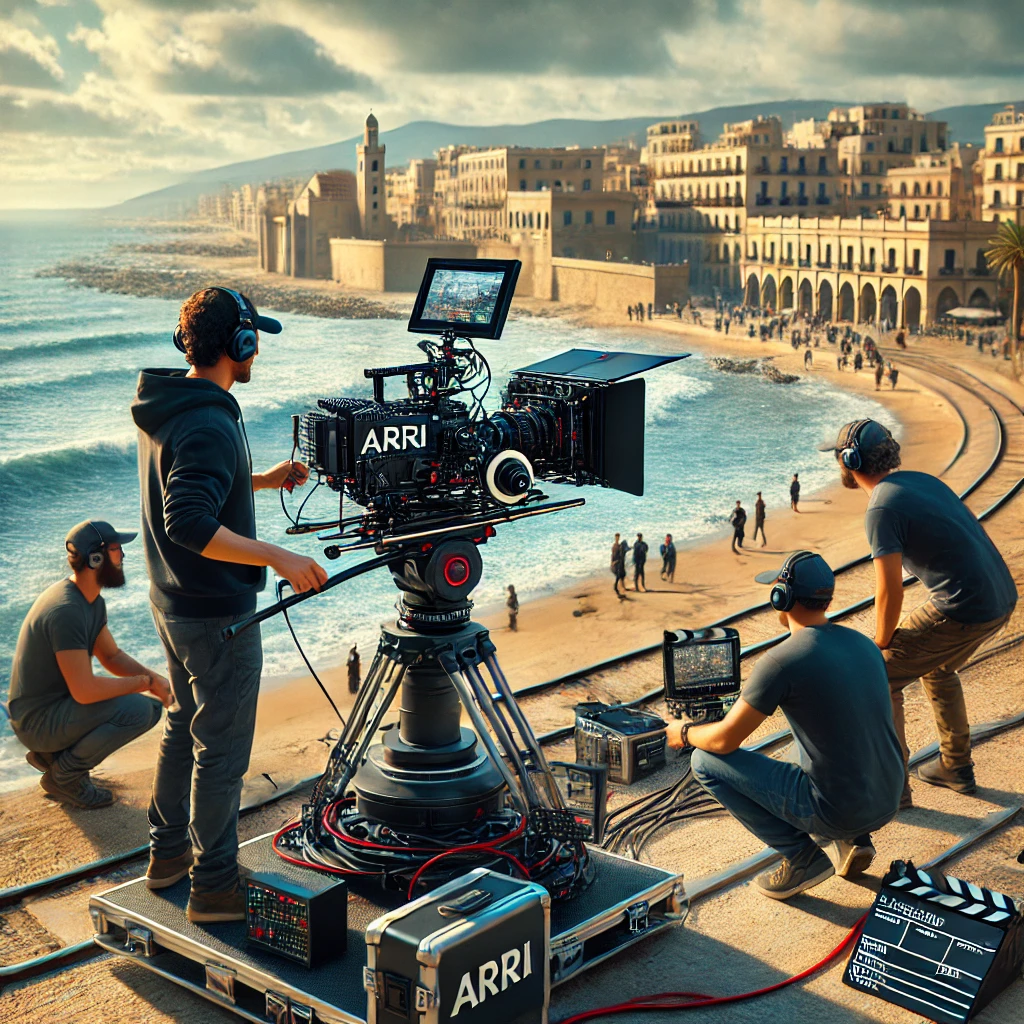Annaba: A Cinematic Journey Through Algeria’s Coastal Treasure
Nestled along Algeria’s northeastern coast, the city of Annaba is a vibrant blend of ancient history, modern energy, and natural beauty. Often referred to as the “Jewel of the East,” Annaba is a city that captivates with its Mediterranean charm, its rich cultural heritage, and its unique position as a crossroads of civilizations. For filmmakers, documentarians, and travelers, Annaba offers a wealth of visual and narrative possibilities, from its historic ruins to its bustling port and verdant hills.
A Glimpse into History: Annaba’s Ancient Roots
Annaba’s history stretches back over 2,500 years, making it one of Algeria’s oldest cities. Originally founded as Hippo Regius by the Phoenicians in the 12th century BC, the city later became a major center of Roman North Africa. It was here that Saint Augustine, one of the most important figures in Christian history, served as bishop in the 4th and 5th centuries AD. The city’s ancient roots are still visible today, particularly in the ruins of the ancient city of Hippo, where visitors can walk among the remnants of Roman temples, baths, and basilicas.
Over the centuries, Annaba has been influenced by a succession of cultures, including the Byzantine, Arab, and Ottoman empires, each leaving its mark on the city’s architecture, culture, and traditions. Today, Annaba is a city where the past and present coexist harmoniously, offering a unique setting for filmmakers looking to explore themes of history, memory, and cultural continuity.
Location and Accessibility: Annaba’s Place in Algeria
Annaba is located in the northeastern corner of Algeria, about 600 kilometers east of Algiers. The city is situated on a picturesque bay, bordered by the Mediterranean Sea to the north and the verdant Edough Mountains to the south. This strategic location has made Annaba an important port city for centuries, a role it continues to play today as one of Algeria’s busiest maritime hubs.
The journey to Annaba from Algiers is a scenic one, whether by road, rail, or air. The drive along the A1 motorway offers breathtaking views of the Mediterranean coastline, with the road winding through coastal towns and rural landscapes. The train ride, which takes approximately eight hours, provides a leisurely and picturesque route through northern Algeria, passing through forests, valleys, and rolling hills.
Annaba is also accessible by air, with Rabah Bitat Airport located just 12 kilometers from the city center. The airport connects Annaba to major cities across Europe, North Africa, and the Middle East, making it an easily accessible destination for international filmmakers and production crews. Once in the city, Annaba’s modern infrastructure ensures smooth logistics, whether you’re transporting equipment, coordinating with local authorities, or moving between filming locations.
Annaba as a Cinematic Destination: A Director’s Perspective
From a filmmaker’s perspective, Annaba is a city that offers a rich tapestry of visual and narrative possibilities. The city’s location on the Mediterranean coast provides a stunning natural backdrop, with its turquoise waters, sandy beaches, and dramatic cliffs offering endless opportunities for capturing beautiful seascapes. The light in Annaba is particularly special, with the coastal setting creating a quality of light that is both soft and vibrant—a filmmaker’s dream for shooting at dawn or dusk.
The city itself is a blend of old and new, where ancient ruins stand alongside modern buildings, and traditional markets bustle with life in the shadow of grand colonial-era architecture. The ruins of Hippo Regius are a highlight for any production exploring historical themes. The site, with its ancient columns, mosaics, and amphitheater, offers a glimpse into the grandeur of the Roman Empire and provides a stunning location for historical dramas or documentaries.
The Basilica of Saint Augustine, perched on a hill overlooking the city and the sea, is another iconic location. This grand structure, built in the 19th century to honor the city’s most famous resident, combines Romanesque and Byzantine architectural elements, making it a visually striking and symbolically rich location for any film that explores themes of faith, history, and cultural heritage.
In contrast, the modern parts of Annaba, with their wide boulevards, cafes, and bustling port, offer a different kind of cinematic experience—one that reflects the dynamic, forward-looking spirit of the city. Filming in these areas allows for a juxtaposition of the ancient and the contemporary, creating a visual narrative that mirrors the city’s ongoing evolution.
Beyond the City: Annaba’s Surroundings and Natural Beauty
While Annaba itself offers a wealth of cinematic potential, the surrounding region is equally captivating. The Edough Mountains, which rise just south of the city, provide a dramatic natural backdrop, with their lush forests, deep valleys, and panoramic views of the Mediterranean. This area is ideal for capturing scenes of natural beauty, whether you’re filming a documentary about Algeria’s diverse ecosystems or a narrative that requires a setting of rugged, untamed wilderness.
To the west of Annaba lies the Seybouse River, one of Algeria’s longest rivers, which winds through the fertile plains before emptying into the Mediterranean. The river and its surrounding landscape offer a tranquil, pastoral setting that contrasts beautifully with the urban energy of Annaba. This area is perfect for capturing scenes of rural life, with its small farms, orchards, and fishing villages providing a glimpse into the traditional ways of life that continue to thrive in this part of Algeria.
The coastal town of Seraïdi, located in the mountains above Annaba, offers another stunning location for filmmakers. With its cool mountain air, dense forests, and panoramic views of the sea, Seraïdi is a popular retreat for those looking to escape the summer heat of the coast. The town’s chalets and mountain trails provide a picturesque setting for scenes that require a more secluded, intimate atmosphere.
The Journey from Algiers: A Cinematic Coastal Route
The journey from Algiers to Annaba is more than just a trip between two cities—it’s a cinematic experience that takes you through some of Algeria’s most beautiful and diverse landscapes. Whether you choose to drive or take the train, the route offers plenty of opportunities to capture the natural beauty and cultural richness of northern Algeria.
The coastal highway, which hugs the Mediterranean shoreline for much of the journey, is a filmmaker’s dream. The road passes through charming coastal towns, with views of the sea on one side and the rolling hills of the Tell Atlas on the other. The changing light throughout the day, from the soft morning glow to the fiery hues of sunset, creates a dynamic and ever-shifting backdrop for any road trip scene.
For those who prefer the train, the journey offers a slower, more intimate view of the landscape. The train winds through forests, along rivers, and past villages, providing a continuous flow of visual inspiration. The rhythmic sound of the train, combined with the ever-changing scenery, creates a sense of movement and progression that is perfect for a travel documentary or a narrative that unfolds along the journey.
Annaba: A City of Stories, Waiting to Be Told
Annaba is more than just a coastal city—it’s a living canvas for filmmakers and storytellers. Its rich history, stunning natural beauty, and vibrant cultural scene provide a wealth of material for any production. Whether you’re capturing the ancient ruins of Hippo Regius, the modern energy of the port, or the serene beauty of the Edough Mountains, Annaba offers a setting that enhances every story.
The city’s unique light, its blend of ancient and modern, and its breathtaking natural surroundings make it a destination that rewards exploration. For those willing to delve into its layers of history and culture, Annaba offers a cinematic experience that is both visually captivating and narratively rich. It’s a place where the past and present coexist, where every street and shoreline holds a new discovery, and where the stories waiting to be told are as diverse and vibrant as the city itself.



